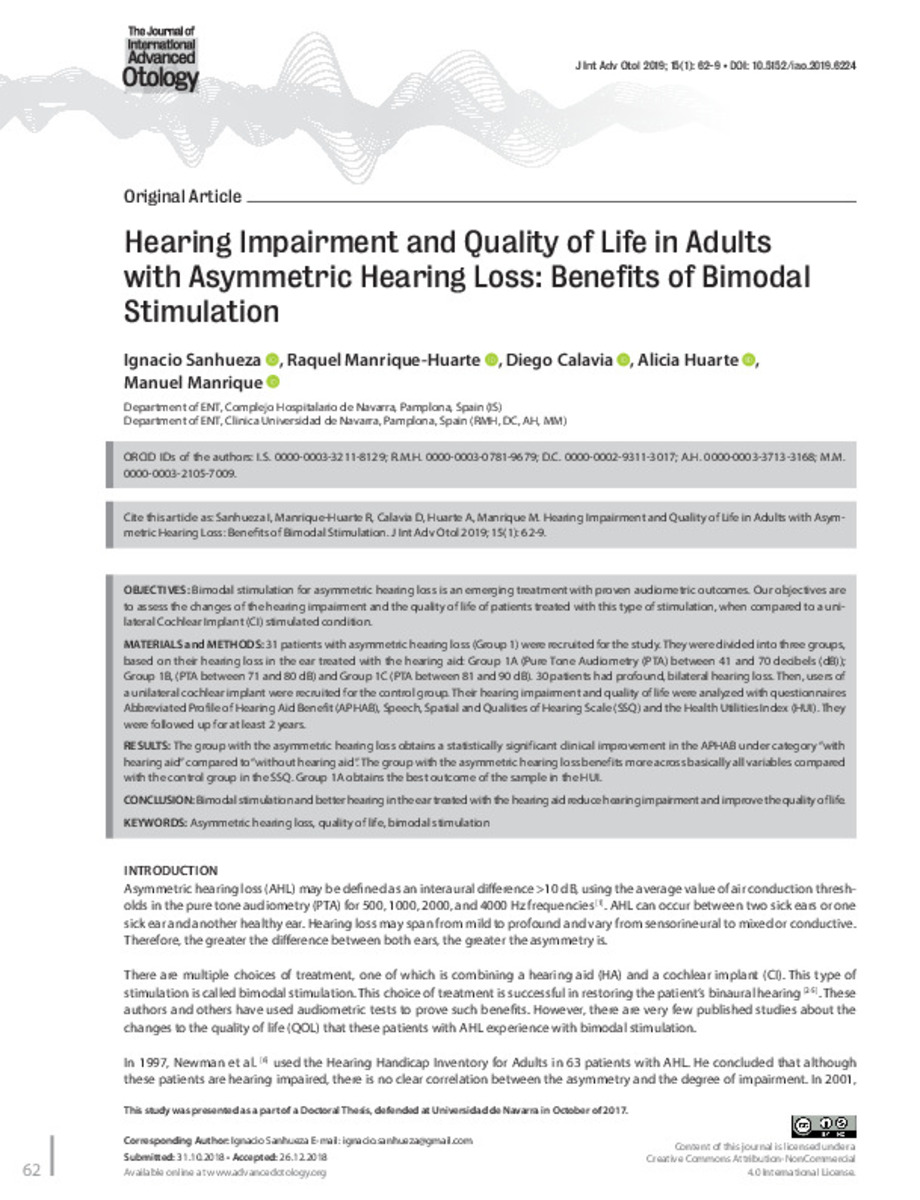Hearing Impairment and Quality of Life in Adults with Asymmetric Hearing Loss: Benefits of Bimodal Stimulation
Keywords:
Materias Investigacion::Ciencias de la Salud::Otorrinolaringología
Asymmetric hearing loss
Quality of life
Bimodal stimulation
Publisher:
AVES Publishing Co.
Note:
Content of this journal is licensed under a Creative Commons Attribution-NonCommercial 4.0 International License.
Citation:
Sanhueza, I. (Ignacio); Manrique-Huarte, R. (Raquel); Calavia, D. (Diego); et al. "Hearing Impairment and Quality of Life in Adults with Asymmetric Hearing Loss: Benefits of Bimodal Stimulation". The Journal of International Advanced Otology. 15 (1), 2019, 62 - 69
Statistics and impact
0 citas en

0 citas en

Items in Dadun are protected by copyright, with all rights reserved, unless otherwise indicated.








